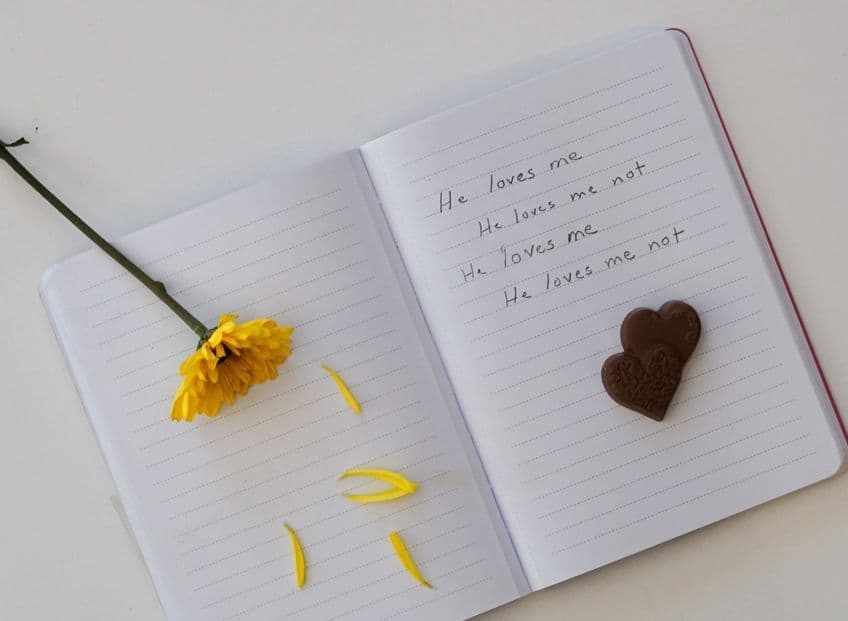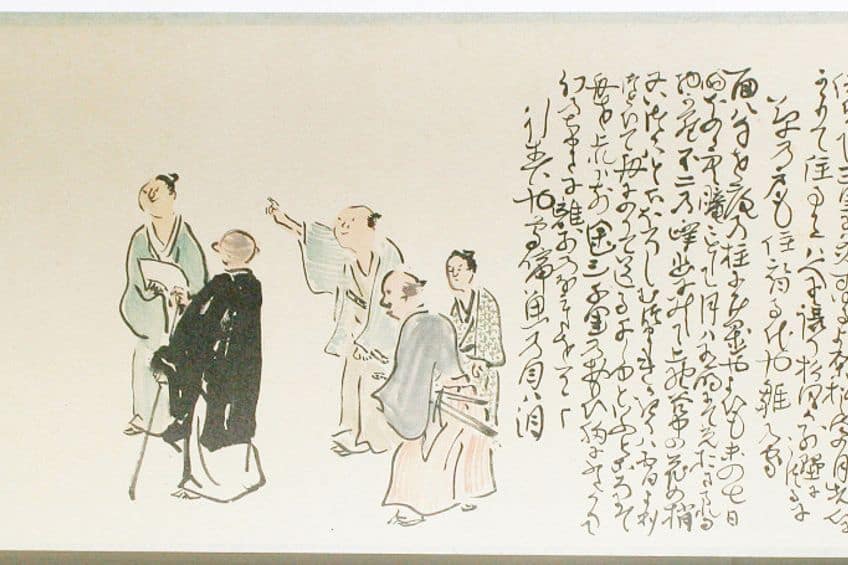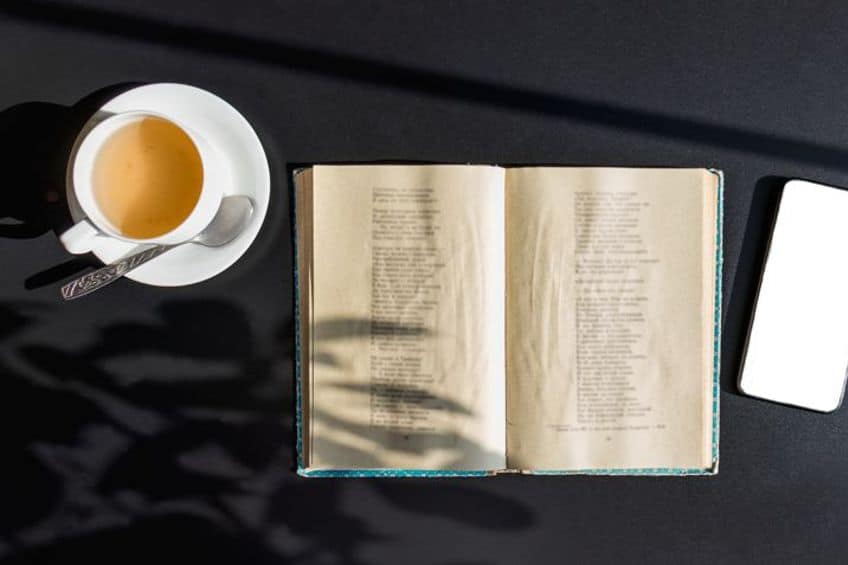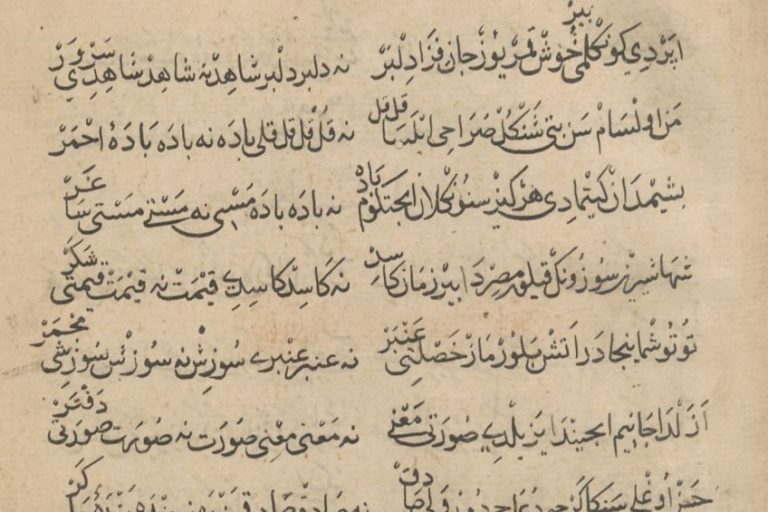Types of Poems – All You Need to Know About Poem Styles
There are numerous poems in the world with various rules. There may even be a haiku or a limerick that you know very well, but are not even aware that the poem belongs to a specific poem type! Whether you are on your own poetry writing journey or are simply interested in exploring different poetry styles, we have listed some of the must-know styles below, along with examples!
What Is the Definition of a Poem?
Poetry is a form of writing that is also known as verse, and uses language that has both rhythmic and aesthetic qualities that evokes an imaginative or emotional response within the reader (or audience). Poetry is known for its intensity, expressing feelings and ideas through style, sound, rhythm, and literary devices.

Ten Types of Poems With Examples
Did you know that there are over 50 different types of poems? Which is amazing and shows how flexible and creative poetry writing can be. Unfortunately, if we listed them all you would be reading this article for a very long time, so we have provided a list below of the must-know types of poetry.
We also provide examples for each so that you get a better understanding of these types of poems’ structures.
Haiku
Born in Japan, a Haiku is a type of short poem that has become quite popular in contemporary culture. This poem form consists of three lines. Five syllables are contained in the first and third lines, while the second line has seven syllables.

Example of a Haiku
| Author | Chuck Palahniuk (1962 – Present) |
| Title | Flowers Bloom and Die |
| Date Published | From the book, Fight Club (1996) |
“Flowers bloom and die
Wind brings butterflies or snow
A stone won’t notice”
Sonnet
When we think of a sonnet, the first thing that comes to mind is probably William Shakespeare (1564 – 1616). Although he is famous for practicing the Shakespearean sonnet, Shakespeare was not the only poet to have a sonnet named after him. There are two forms of sonnets and the second one is called the Petrarchan, named after Francesco Petrarca (1304 – 1374) or Petrarch.
The sonnet poetic form began in Italy in the 13th century and is made up of 14 lines and is often written on the subject of love or romance.
Three quatrains make up the Shakespearean sonnet, with 4 lines in each, and two lines at the end of the poem forming a couplet. The rhyme scheme would therefore be as follows: ABAB, CDCD, EFEF, GG. The Petrarchan sonnet consists of two stanzas, the first presenting a question or observation, while the second stanza answers it. The eighth or ninth line contains a volta or a turn in the discussion or thought pattern. The rhyme scheme for a Petrarchan sonnet would be ABBA, ABBA, CDECDE.
Example of a Sonnet
| Author | William Shakespeare (1564 – 1616) |
| Title | Sonnet 130: My mistress’ eyes are nothing like the sun |
| Date Published | 1609 |
“My mistress’ eyes are nothing like the sun;
Coral is far more red than her lips’ red;
If snow be white, why then her breasts are dun;
If hairs be wires, black wires grow on her head.
I have seen roses damasked, red and white,
But no such roses see I in her cheeks;
And in some perfumes is there more delight
Than in the breath that from my mistress reeks.
I love to hear her speak, yet well I know
That music hath a far more pleasing sound;
I grant I never saw a goddess go;
My mistress, when she walks, treads on the ground.
And yet, by heaven, I think my love as rare
As any she belied with false compare.”
Villanelle
Villanelles have a very specific rhyme scheme and often describes deep subject matters, such as obsession. It contains 19 lines and five stanzas with three lines in each one, except for the last stanza which closes with four lines. ABA, ABA, ABA, ABA, ABA, ABAA is what the scheme of the rhyme would look like. Many of the lines are repetitive, with line one repeating in lines six, twelve, and eighteen, and line three repeating with lines nine, fifteen, and nineteen.

Example of a Villanelle
| Author | Elizabeth Bishop (1911 – 1979) |
| Title | One Art |
| Date Published | 1976 |
“The art of losing isn’t hard to master;
so many things seem filled with the intent
to be lost that their loss is no disaster.
Lose something every day. Accept the fluster
of lost door keys, the hour badly spent.
The art of losing isn’t hard to master.
Then practice losing farther, losing faster:
places, and names, and where it was you meant
to travel. None of these will bring disaster.
I lost my mother’s watch. And look! my last, or
next-to-last, of three loved houses went.
The art of losing isn’t hard to master.
I lost two cities, lovely ones. And, vaster,
some realms I owned, two rivers, a continent.
I miss them, but it wasn’t a disaster.
—Even losing you (the joking voice, a gesture
I love) I shan’t have lied. It’s evident
the art of losing’s not too hard to master
though it may look like (Write it!) like disaster.
Concrete Poems
Concrete poems are written in such a way that they form a shape. Sometimes these types of poems form a recognizable shape or something more abstract. This is achieved through layout or spacing of the text and the form created is often linked to an important theme in the poem or even an object.
An example is the Christmas tree in the example below.
Example of a Concrete Poem
| Author | George Starbuck (1931 – 1996) |
| Title | Sonnet in the Shape of a Potted Christmas Tree |
| Date Published | 1978 |
*
O
fury-
bedecked!
O glitter-torn!
Let the wild wind erect
bonbonbonanzas; junipers affect
frostyfreeze turbans; iciclestuff adorn
all cuckolded creation in a madcap crown of horn!
It’s a new day; no scapegrace of a sect
tidying up the ashtrays playing Daughter-in-Law Elect;
bells! bibelots! popsicle cigars! shatter the glassware! a son born
now
now
while ox and ass and infant lie
together as poor creatures will
and tears of her exertion still
cling in the spent girl’s eye
and a great firework in the sky
drifts to the western hill.
Elegy
An elegy does not stick to particular rules like a sonnet, a Haiku, or villanelle, but is usually written after someone has passed away. Therefore, the theme is often centered on mourning a particular person, or it can simply be about the subject of loss.

Example of an Elegy
| Author | Mary Jo Bang (1946 – Present) |
| Title | You Were You Are Elegy |
| Date Published | 2007 |
“Fragile like a child is fragile.
Destined not to be forever.
Destined to become other
To mother. Here I am
Sitting on a chair, thinking
About you. Thinking
About how it was
To talk to you.
How sometimes it was wonderful
And sometimes it was awful.
How drugs when drugs were
Undid the good almost entirely
But not entirely
Because good could always be seen
Glimmering like lame glimmers
In the window of a shop
Called Beautiful
Things Never Last Forever.
I loved you. I love you. You were.
And you are. Life is experience.
It’s all so simple. Experience is
The chair we sit on.
The sitting. The thinking
Of you where you are a blank
To be filled
In by missing. I loved you.
I love you like I love
All beautiful things.
True beauty is truly seldom.
You were. You are
In May. May now is looking onto
The June that is coming up.
This is how I measure
The year. Everything Was My Fault
Has been the theme of the song
I’ve been singing,
Even when you’ve told me to quiet.
I haven’t been quiet.
I’ve been crying. I think you
Have forgiven me. You keep
Putting your hand on my shoulder
When I’m crying.
Thank you for that. And
For the ineffable sense
Of continuance. You were. You are
The brightest thing in the shop window
And the most beautiful seldom I ever saw.”
Limerick
Limericks are often humorous and sometimes even rude, but not all are written to be either. Five lines make up a limerick poem and the structure follows the AABBA rhyme scheme.
The first two lines and the fifth line rhyme, while a different rhyme is given to the third and fourth lines.
Example of a Limerick
| Author | Edward Lear (1812 – 1888) |
| Title | There once was a man from Nantucket |
| Date Published | 1846 |
“There once was a man from Nantucket
Who kept all his cash in a bucket.
But his daughter, named Nan, Ran away with a man
And as for the bucket, Nantucket.”
Ode
Ode poetry finds its origins in Greece, where it was mostly performed at sports events to celebrate the athletic achievements of the participants. It was later adapted by poets to be a lyrical poem used as a form of praise for a person, event or even an object, and employs emotionally rich language. Traditionally, this type of poetry is intended to be sung along to music. There are various types of Odes but they all adhere to specific structures.

Traditionally, an Ode is made up of three stanzas or sections: The first is the strophe, which usually has two or more lines and is repeated as a distinct segment. The next part is the antistrophe, which is structured the same way as the first section, but counteracts in a way that relates to the theme of the poem. The last section or stanza consists of the epode which is used to conclude the ode, and usually has a recognizably different meter from the strophe and antistrophe.
Example of an Ode
| Author | Percy Bysshe Shelley () |
| Title | Ode to the West Wind |
| Date Published | 1820 |
A piece taken from the poem:
“O wild West Wind, thou breath of Autumn’s being,
Thou, from whose unseen presence the leaves dead
Are driven, like ghosts from an enchanter fleeing,
Yellow, and black, and pale, and hectic red,
Pestilence-stricken multitudes: O thou,
Who chariotest to their dark wintry bed
The winged seeds, where they lie cold and low,
Each like a corpse within its grave, until
Thine azure sister of the Spring shall blow
Her clarion o’er the dreaming earth, and fill
(Driving sweet buds like flocks to feed in air)
With living hues and odours plain and hill:
Wild Spirit, which art moving everywhere;
Destroyer and preserver; hear, oh hear!”
Free Verse
Free verse poetry has become quite popular since the 19th century, particularly during the Modernist period. This is probably because, unlike other forms of poetry, it is not bound by rules, allowing the writer more freedom and leeway.
While free verse poems still have some sort of structure, they do not necessarily have a metrical pattern or consistent rhyme scheme.
Example of a Free Verse Poem
| Author | William Carlos Williams (1883 – 1963) |
| Title | The Red Wheelbarrow |
| Date Published | 1923 |
“so much depends
upon
a red wheel
barrow
glazed with rain
water
beside the white
chickens”
Blank Verse
Blank verse and free verse poetry often get confused, as they both are unrhymed. However, the difference is that blank verse poetry has a regular meter, most often written in iambic pentameter. When a poem is written in iambic pentameter, five iambs are contained in each line, which are two pairs of syllables where the second syllable is stressed or emphasized. So, the rhythm of an iamb would sound like: dah-DAH. Five iambs in a row would therefore sound like this: dah-DAH, dah-DAH, dah-DAH, dah-DAH, dah-DAH.

Example of a Blank Verse Poem
| Author | John Milton (1608 – 1674) |
| Title | Paradise Lost |
| Date Published | First published in 1667 |
A piece taken from the poem:
“OF Mans First Disobedience, and the Fruit
Of that Forbidden Tree, whose mortal tast
Brought Death into the World, and all our woe,
With loss of Eden, till one greater Man
Restore us, and regain the blissful Seat,
Sing Heav’nly Muse, that on the secret top
Of Oreb, or of Sinai, didst inspire
That Shepherd, who first taught the chosen Seed,
In the Beginning how the Heav’ns and Earth
Rose out of Chaos…”
Ekphrastic
Ekphrastic poetry is not written with specific rules, but they refer to other works of art like a sculpture, a painting, a photograph, or another literary work. The word, ekphrastic is taken from the Greek word that translates to “description” and that is exactly what this type of poem is intended for.
Describing other works in vivid detail.
Example of an Ekphrastic poem
| Author | Percy Bysshe Shelley (1792 – 1822) |
| Title | On the Medusa of Leonardo Da Vinci in the Florentine Gallery |
| Date Published | 1819 |
“It lieth, gazing on the midnight sky,
Upon the cloudy mountain peak supine;
Below, far lands are seen tremblingly;
Its horror and its beauty are divine.
Upon its lips and eyelids seems to lie
Loveliness like a shadow, from which shrine,
Fiery and lurid, struggling underneath,
The agonies of anguish and of death.
Yet it is less the horror than the grace
Which turns the gazer’s spirit into stone;
Whereon the lineaments of that dead face
Are graven, till the characters be grown
Into itself, and thought no more can trace;
‘Tis the melodious hue of beauty thrown
Athwart the darkness and the glare of pain,
Which humanize and harmonize the strain.
And from its head as from one body grow,
As [ ] grass out of a watery rock,
Hairs which are vipers, and they curl and flow
And their long tangles in each other lock,
And with unending involutions shew
Their mailed radiance, as it were to mock
The torture and the death within, and saw
The solid air with many a ragged jaw.
And from a stone beside, a poisonous eft
Peeps idly into those Gorgonian eyes;
Whilst in the air a ghastly bat, bereft
Of sense, has flitted with a mad surprise
Out of the cave this hideous light had cleft,
And he comes hastening like a moth that hies
After a taper; and the midnight sky
Flares, a light more dread than obscurity.
‘Tis the tempestuous loveliness of terror;
For from the serpents gleams a brazen glare
Kindled by that inextricable error,
Which makes a thrilling vapour of the air
Become a [ ] and ever-shifting mirror
Of all the beauty and the terror there—
A woman’s countenance, with serpent locks,
Gazing in death on heaven from those wet rocks.”

In conclusion, there are many different types of poems, with the poem styles greatly depending on the mood and message that the poet wants to portray to the reader or listener. Haikus are wonderful for short, impactful statements that leave you astounded, while concrete poems are visually interesting and memorable. Whichever it may be, understanding these types of poems’ structures will help you to choose poem styles that better reflect the messages and ideas that you wish to convey as a writer. We hope that you enjoyed this article on 10 types of poems with examples, and that it encourages you to further your journey into the world of poetry!
Frequently Asked Questions
How Many Types of Poetry Are There?
There are over 50 different poetry types. However, despite this number, poetry seminars and studies focus mainly on about seven poetry forms. This may be because 50 is too many to cover in a certain space of time, or because there are several types of poems that are most commonly used.
What Form of Poetry Is the Most Popular?
One of the most favored types of poetry are sonnets. However, free-verse poetry is becoming more and more popular among contemporary writers as they allow more freedom. Haikus have also become very popular around the world for their short yet impactful structure and scheme, and have been used in plenty of popular culture types, such as movies and books.
Jaycene-Fay Ravenscroft is a writer, poet, and creative living in South Africa with over 6 years of experience working in a contemporary art gallery. She completed her Bachelor of Arts degree, majoring in Art History and Ancient History at the University of South Africa, with additional subjects in Archaeology and Anthropology.
With a passion for learning, Jaycene-Fay is very much inspired by symbology and the connection between everything in this world. Trained to analyze and ‘critique’ art, she is passionate about exploring the meaning behind each artwork she encounters and understanding how it connects to the artist’s cultural, historical, and social background. Writing is Jaycene-Fay’s way of having a finger in every pie: to research, share knowledge, and express herself creatively.
Learn more about Jaycene-Fay Ravenscroft and the Art in Context Team.
Cite this Article
Jaycene-Fay, Ravenscroft, “Types of Poems – All You Need to Know About Poem Styles.” Art in Context. March 29, 2023. URL: https://artincontext.org/types-of-poems/
Ravenscroft, J. (2023, 29 March). Types of Poems – All You Need to Know About Poem Styles. Art in Context. https://artincontext.org/types-of-poems/
Ravenscroft, Jaycene-Fay. “Types of Poems – All You Need to Know About Poem Styles.” Art in Context, March 29, 2023. https://artincontext.org/types-of-poems/.









